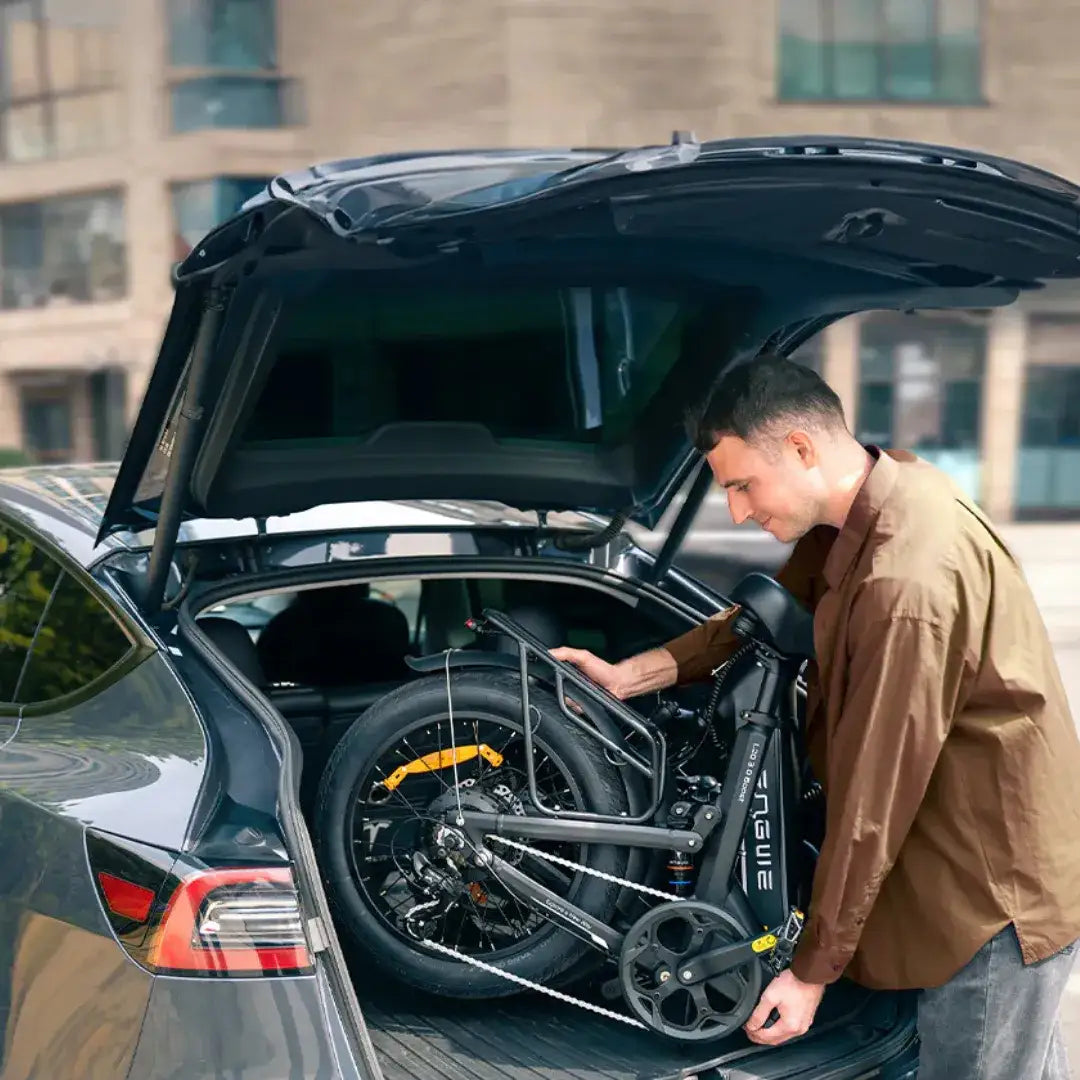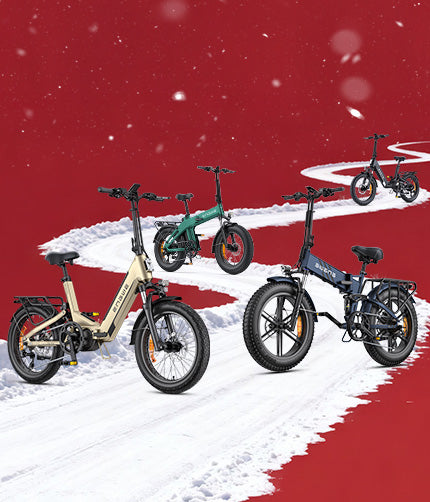Understanding the Core of Your E-Bike: The Drive System
The key to choosing the perfect fat tire electric bike is understanding its beating heart—the drive system. It is this mighty contraption that decides what your e-bike will ride like, how it will perform, and how it will handle different types of terrain. By the end of this discussion, we will have thoroughly unraveled the beast within the three main drive types—rear hub, mid-drive, and all-wheel drive. Rather than rehashing confusing general explanations, the following critical topics are covered in this guide: performance attributes, riding characteristics, and essential owner variables, all in one place to help you choose the ideal motor for your unique circumstances.
The most common and readily available form of drive systems are hub motors, which are built directly into the hub of a wheel. They fall into two primary classes, each providing a distinct riding experience while obviously being the most readily available with a financial or ease-of-purchase consideration. Recognizing the distinctions is the initial stage toward determining the correct fat tire e-bike for your requirements. These motors have been recognized for their simplicity and reliability, and they are frequently recommended to beginners just making a purchase of an electric bike.
Rear Hub Motors
This is the typical style of arrangement. The electric motor is placed in the rear wheel, causing a “push” feeling, which may be reassuring to some riders. It has excellent power to accelerate while on the road generally or on stable routes.
User tip: It may be a little difficult to lift the bike or change a rear flat tire because the weight is concentrated in the back. Its direct power output, on the other hand, is inherently compatible with many people’s expectations and effective for commuting or everyday recreational riding.
Front Hub Motors
Although less common on prebuilt fat bikes, popular conversions utilize these motors and pull the bike. Unlike a rear-heavy bike, this option may distribute the weight around.
Money-saving tip: Many individuals don’t understand the difference between rear- and front-motor bikes; if you’re considering converting one of your current fat bikes, a front hub system often installs as a simple and cheap kit.
Need-to-know: When accelerating hard or on steep inclines, a powerful front-hub motor may lose traction and “spin out” on surfaces that are loose or wet, such as gravel or damp foliage.
The Pinnacle of Performance: Mid-Drive Motors
The mid-drive motor is, without question, the undisputed king for riders with the highest standards when it comes to optimal performance and efficiency and maintaining a natural cycling experience. While a hub motor drives the wheel directly, a mid-drive motor delivers power through the crankset, which leverages the bike’s existing drivetrain and gears. This integration offers considerable advantages, particularly on varied and difficult terrain. ENGWE, known for creating groundbreaking electric bikes, values this system in its most recent models.
The Mid-Drive Advantage
The mid-drive motor manages to keep the ideal RPM by utilizing the bike’s gears. In high gears, you can have substantial torque for conquering steep grades, while in low gears, you can have optimal efficiency while starting from a standstill. A mid-drive system also results in a low and centered center of gravity, providing an excellent sense of balance, control, and responsiveness that closely mimics that of a conventional, non-electric bike. The torque sensor is responsible for the natural ride feel. As the name implies, it measures how much torque you’re applying on the pedals and delivers a proportional power output. That means the power delivery feels quite smooth and intuitive, as opposed to sudden and jerky.
Premier Example: ENGWE L20 3.0 Pro

For anyone wishing the best mid-drive technology in a small, versatile frame, the ENGWE L20 3.0 Pro is the answer. This is exemplified in its cutting-edge 250W Mivice mid-drive motor that generates a groundbreaking amount of torque of up to 100Nm for quick acceleration from low speeds and easy climbing up steep streets. Moreover, a full-suspension system is designed to absorb 90% of vibrations, providing a highly comfortable ride. Furthermore, a large 720Wh Samsung battery is integrated into the bike, offering an impressive range of 160 km and a quick charge of 8A. Finally, the L20 3.0 Pro security features include smart anti-theft protection via the ENGWE IoT module – sending out alarm notifications if anything occurs, GPS tracking, and app connectivity.


The Unstoppable Force: All-Wheel Drive (AWD) and Ride Feel
At the other end of the spectrum are the most extreme conditions where traction is critical, and the AWD is king. With one hub motor in the front wheel and one in the rear wheel, each works in unison to offer unmatched traction and power. While this is a niche category and is primarily reserved for riding in snow, sand, mud, or extremely loose conditions, an AWD fat tire e-bike is usually the only viable option. It features the following benefits and drawbacks: The primary disadvantage is the weight, complexity, and battery consumption as the same output is equivalent to doubling the power consumption. A required feature for high-quality models is a selectable drive controller. Features, such as an electric handbrake, ensure safer braking.
Although the objective specifications of a drive system are critical, the personal riding experience and how well it matches the terrain you intend to ride on is all that matters. Each motor type feels uniquely different on the trail and the road but thrives in many areas and struggles in others. It is important to match your drive type with your primary riding environment; otherwise, you will have made an expensive mistake. This table provides a quick match to the environment.
On-Bike Feel and Handling
Rear Hub:
Feels strong and fast on a straight line. The push is instant. Tends to feel less responsive in tight corners due to most of the weight being on the rear.
Mid-Drive:
Feels balanced, agile, and responsive. The bike feels like a normal bike and is amazing on highly technical trails that demand shifting the weight.
AWD:
Feels super grounded and adhered to the trail. More about forward momentum than agility. The bike will feel significantly heavier to handle.
Terrain Suitability Matrix:
| Drive Type | Best For | Less Suited For |
|---|---|---|
| Rear Hub | Urban commuting, paved bike paths, light gravel trails, and flat to moderate hills | Tightly winding or steep singletrack, inadequate traction over deep soft sand or snow |
| Mid-Drive | All-around bike, steep climbing, technical mountain biking, long-distance (130 km+) rides. | Riders on a tight budget. |
| All-Wheel Drive | Deep snow, deep sand, mud, extreme off-roading, all conditions | Paved roads, lightweight needs, or budget constraints |
Long-Term Ownership: Maintenance, Durability, and Cost
After considering the initial performance, the long-term considerations are arguably the most critical factor in ownership: maintenance, durability, and cost. Since each drive system has a different cost of entry and poses unique maintenance requirements, they can end up costing you more, eventually, in terms of your wallet and time. A good choice isn’t just about initial performance; it’s how low-maintenance and low-cost the system can become. Hub motors are generally sealed, self-contained units that don’t need regular maintenance. However, they require more stress on the frame’s dropouts and make it much more challenging to change the flat tire than on a non-hub wheel. Mid-drive motors focus mass on the bottom bracket, applying a greater load to factors like the chain and cassette, which weaken faster and require many replacements.
More Tips:
The most effective way for a mid-drive owner to maintain his system is to clean and lubricate the chain regularly and replace the worn chain early on to ensure the power plant remains operational.
Cost Criteria:
Hub motors, the low and middle-range industry standard, give most casual cyclists the best performance for the cost. Mid-drives are at a higher price point but with superior motor performance, a more natural cycling experience, and better efficiency. AWD systems are found in higher-priced e-bike models due to the inclusion of two motors, a complex controller, and a larger battery.
The best drivetrain for climbing mountains? A mid-drive motor is undoubtedly the best drive system for climbing because it leverages the bicycle’s gear system, acting like a transmission to dramatically increase the torque at low speeds.

Frequently Asked Questions
Are hub motors worse than mid-drive motors?
That is not the case in general. Due to their simple, sealed design with few moving parts, high-quality hub motors are also quite reliable. Rather than the motor itself, the wheel spokes and the frame’s dropouts are usually the weakest points.
Does an AWD e-bike consume twice the battery?
It consumes considerably more power when at full power. However, if you’re riding on level terrain, you can simply run one motor with a selectable driving mode, which means the motor’s range is the same as that of bikes with a single motor in such conditions.
Selecting the appropriate drive method is the most critical factor in finding the best fat tire electric bike for your requirements.









